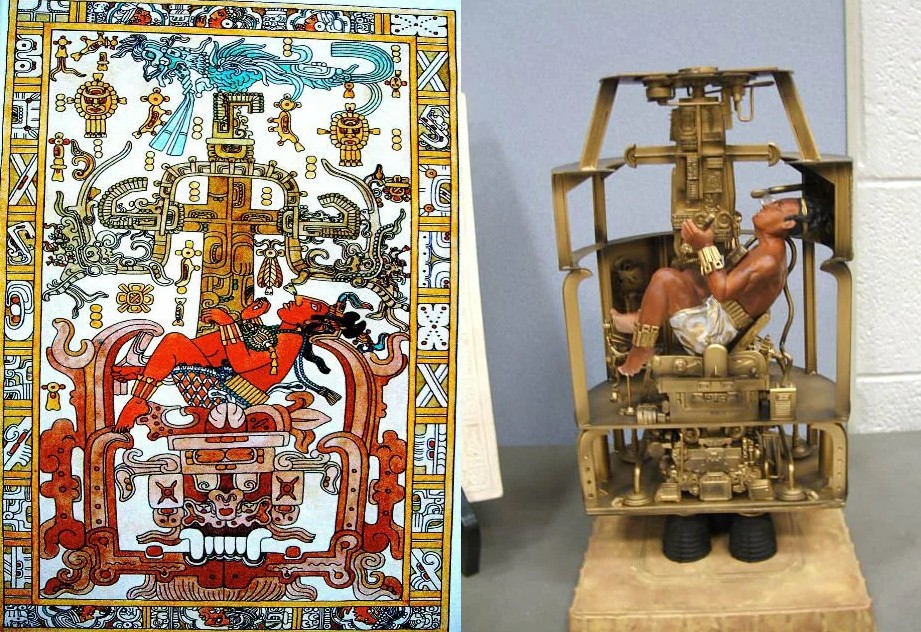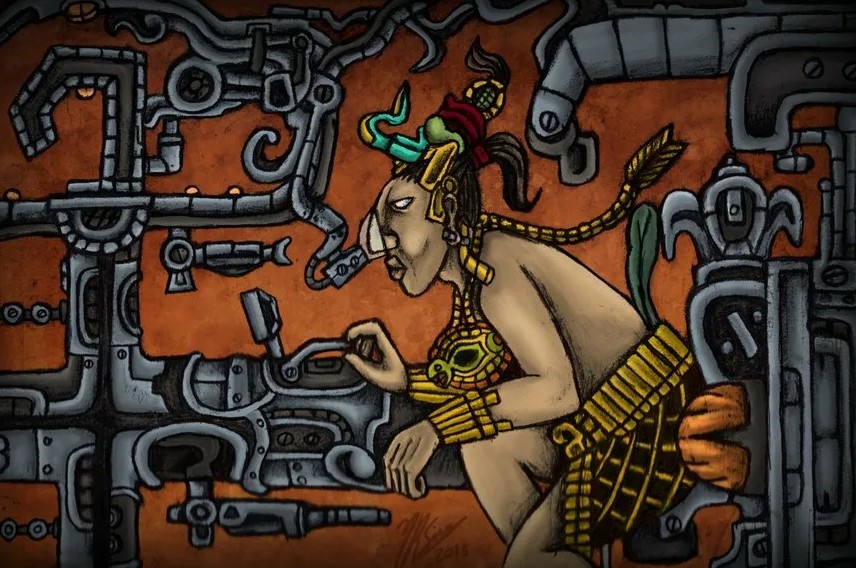The Palenque Astronaut: Time Traveler or Modern Myth?
Hidden in the jungle-quiet hills of Palenque lies Pacal the Great’s tomb, a seventh‑century Maya ruler sealed inside a colossal stone sarcophagus. The lid bears a dramatic relief that has kept archaeologists and conspiracy writers buzzing for decades. Some writers, notably Erich von Däniken and Charles Berlitz, have argued that the image resembles a spacecraft lifting Pacal into the sky. They point to Pacal’s horizontal position on the lid, a blaze of fire at the bottom, and what looks like a control panel with switches and a tube‑like conduit near his nose. If true, the image would rewrite history and raise the possibility of time- or space-travel technology in the distant past.

In This Article:
Pacal’s Tomb: A Ruler’s Rest Beneath Palenque
To the north of Chiapas, Mexico, Pacal’s tomb sits inside a massive stone sarcophagus within the burial chamber of a stepped pyramid. The grave goods are humble by comparison—jade beads among a few offerings—but the reliefs and sculptures that surround the tomb exalt the ruler’s power and significance. The lid’s relief is a centerpiece of the mystery, inviting an interpretation that blends reverence with speculation about ancient technology.

The Relief: A Ship, A Rocket, Or A Portal?
The relief on the lid has become a flashpoint for the ancient‑astronaut hypothesis. Proponents claim the image resembles a modern spacecraft or rocket delivering Pacal beyond our planet. They argue Pacal is shown in a launch‑like position, with bottom flames and smoke, and a figure working a control panel with switches. A tubular duct leading toward Pacal’s nose is read by some as a life‑support conduit. In short, the stones are read as a machine—not merely a king’s portrait.

Bones, Ages, and a Question of Identity
Beyond the visual debate lies a stubborn factual puzzle. The inscriptions and the tomb’s context identify Pacal as the one who lies within, but the age of the remains is disputed. Some accounts suggest the king ruled until his death at an advanced age, while other analyses place the bones at roughly 40–50 years old. The sarcophagus had not been opened for centuries, remaining sealed until its discovery in 1952 by archaeologist Alberto Ruz Lhuillier.

Time Machine or Red Herring? A Pause for Possibility
A final twist asks whether the ‘machine’ on the lid was never a vehicle for space at all but a device for time. A minority theory posits that Pacal could have been a traveler from a future civilization who came to the Maya world and carried advanced technology with him. If true, Palenque would hint at a hidden timeline—one where a highly developed past or future civilization influenced the Maya. The debate invites us to reconsider what we think we know about our own history and how much we still have to learn.

